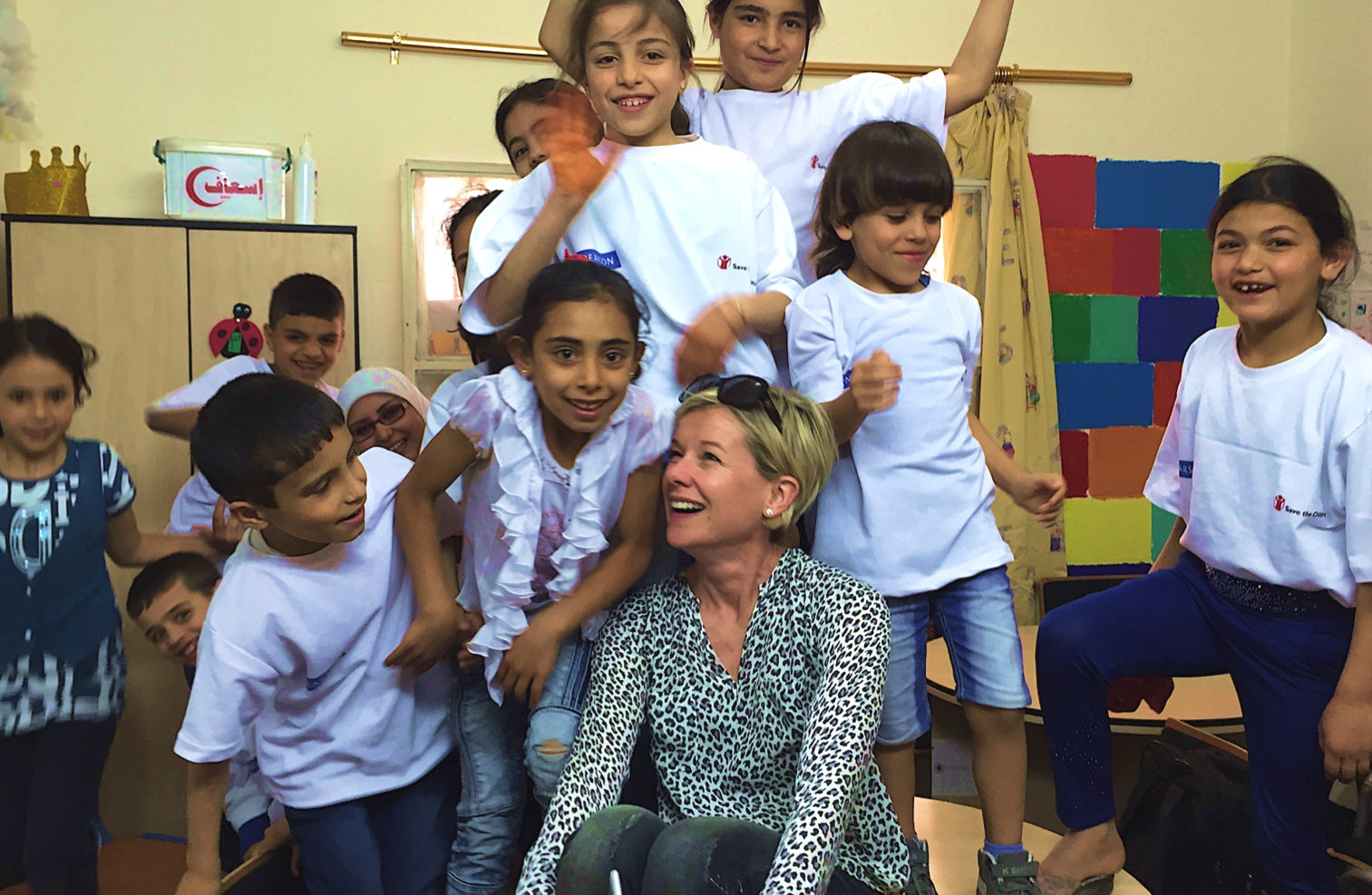When Kate James joined Pearson in 2014 as its chief of corporate affairs and global marketing, the international education publisher was going through some changes. One such move included a shift from what James calls “arm’s-length philanthropy,” whereby a corporation simply cuts a check to an outside nonprofit, to taking a more active role in developing change-driven solutions.
In the second installment of our series “10 Leaders on Business for Good,” NationSwell founder and CEO Greg Behrman talked with James about how Pearson is altering the landscape of public-private partnerships for the better and what other companies can learn from those efforts.
You’ve worked at both philanthropic foundations and big corporations. What can a socially focused company do to enact change that might be harder for a nonprofit to do?
The journey that Pearson has been on, and continues to be on, is figuring out how to move from most of our social-impact work being done by a foundation at arm’s length to really embracing the opportunity for social innovation. To more bluntly answer your question: the private-sector dollar is super-important, especially given the scale of the challenges that the world is facing. Also, a large company can more easily convene other powerful players behind a cause while harnessing its campaign capabilities. Corporations can put their brand into play and leverage their commercial influence to reach more people in need. Pearson isn’t just coming at a problem with a check; instead we’re saying, ‘Hey, we can bring a lot more to it with our R&D capabilities.’

What projects is Pearson working on currently that you’re particularly excited about?
Right now we’re focused on three big initiatives. One that we are certainly most proud of is Project Literacy, which is no big surprise for an education company. When we conducted our initial research into the issue, we were struck by the fact that there are 757 million people around the world that lack basic literacy skills. And so Pearson seized the opportunity to create a coalition that’s working to close the literacy gap. We’ve attracted more than 100 diverse partners, from Microsoft to USAID, who all realize education is a fundamental part of any solution, from reducing child mortality rates to enabling someone suffering from AIDS to wholly understand their disease.
Pearson has also launched an internal incubator for employees to develop their entrepreneurial skills. They’re given the time to really think about ideas that can reach communities that otherwise Pearson’s products and services wouldn’t be reaching. For example, we’ve seen proposals for really smart ways to utilize the power of virtual reality and another that examines the refugee challenges in Germany and how to meet them.
And then there’s our work in Jordan with Save the Children on a program called Every Child Learning. Our partnership plays to our R&D strengths; we’re piloting a digital learning solution to deliver education to Syrian refugees and host community children in Jordan, with an eye toward adapting and scaling these in other emergency situations. Because these kids are often moving from place to place, we believe a mobile education platform is part of the solution.
How has Pearson’s focus on researching and developing solutions for social good changed the working environment for employees?
By constantly innovating and trying new things, we’re working to align our social-impact work with our own business goals and objectives. When you get that alignment, it’s amazing how much more resolve employees have and how much more engaged they are. When you’re focused on the double bottom line, then the work is sustainable and that means companies will be much more involved in philanthropic efforts and for a longer period of time. That’s what we have at Pearson that was missing before: a deeper level of connection between a foundation’s work and a corporation’s commercial strategy.
What’s the best career advice you’ve been given?
I started my career at GlaxoSmithKline, and the head of corporate affairs then was a wonderful lady. I didn’t recognize it at the time, but she made a lot of effort to talk to the young women graduates who were coming into GSK, and she became a phenomenal role model. She showed us how you could navigate a career path right to the very top. What really stuck with me is the importance of and the responsibility to really spend time with young women often. Some of our sparkiest young employees are women and, from the get-go, they can see that there are no limits to what they can accomplish. As the former Secretary of State Madeleine Albright said, there’s a special place in hell for women who don’t help each other. I think that’s a pretty important mantra for all women in senior positions to take pretty seriously.

 "
"